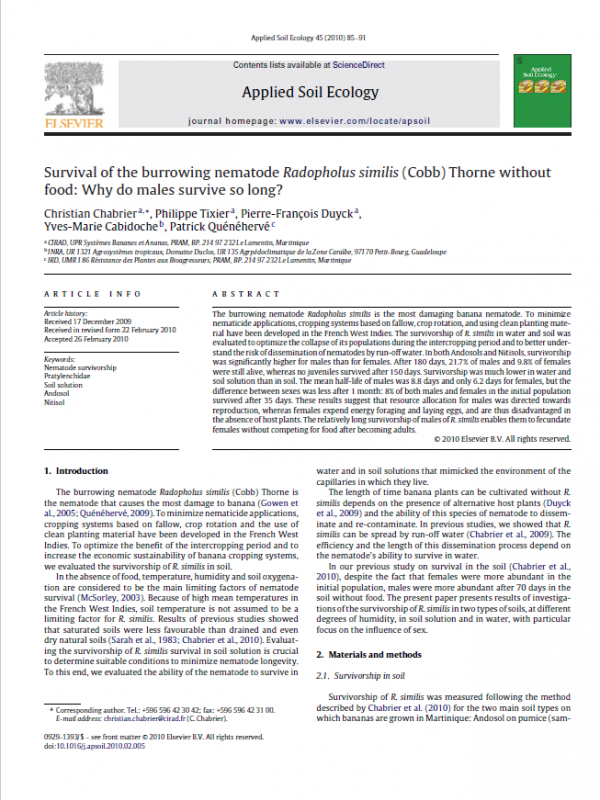
The burrowing nematode Radopholus similis is the most damaging banana nematode. To minimize nematicide applications, cropping systems based on fallow, crop rotation, and using clean planting material have been developed in the French West Indies. The survivorship of R. similis in water and soil was evaluated to optimize the collapse of its populations during the intercropping period and to better understand the risk of dissemination of nematodes by run-off water. In both Andosols and Nitisols, survivorship was significantly higher for males than for females. After 180 days, 21.7% of males and 9.8% of females were still alive, whereas no juveniles survived after 150 days. Survivorship was much lower in water and soil solution than in soil. The mean half-life of males was 8.8 days and only 6.2 days for females, but the difference between sexes was less after 1 month: 8% of both males and females in the initial population survived after 35 days. These results suggest that resource allocation for males was directed towards reproduction, whereas females expend energy foraging and laying eggs, and are thus disadvantaged in the absence of host plants. The relatively long survivorship of males of R. similis enables them to fecundate females without competing for food after becoming adults. (Résumé d'auteur)